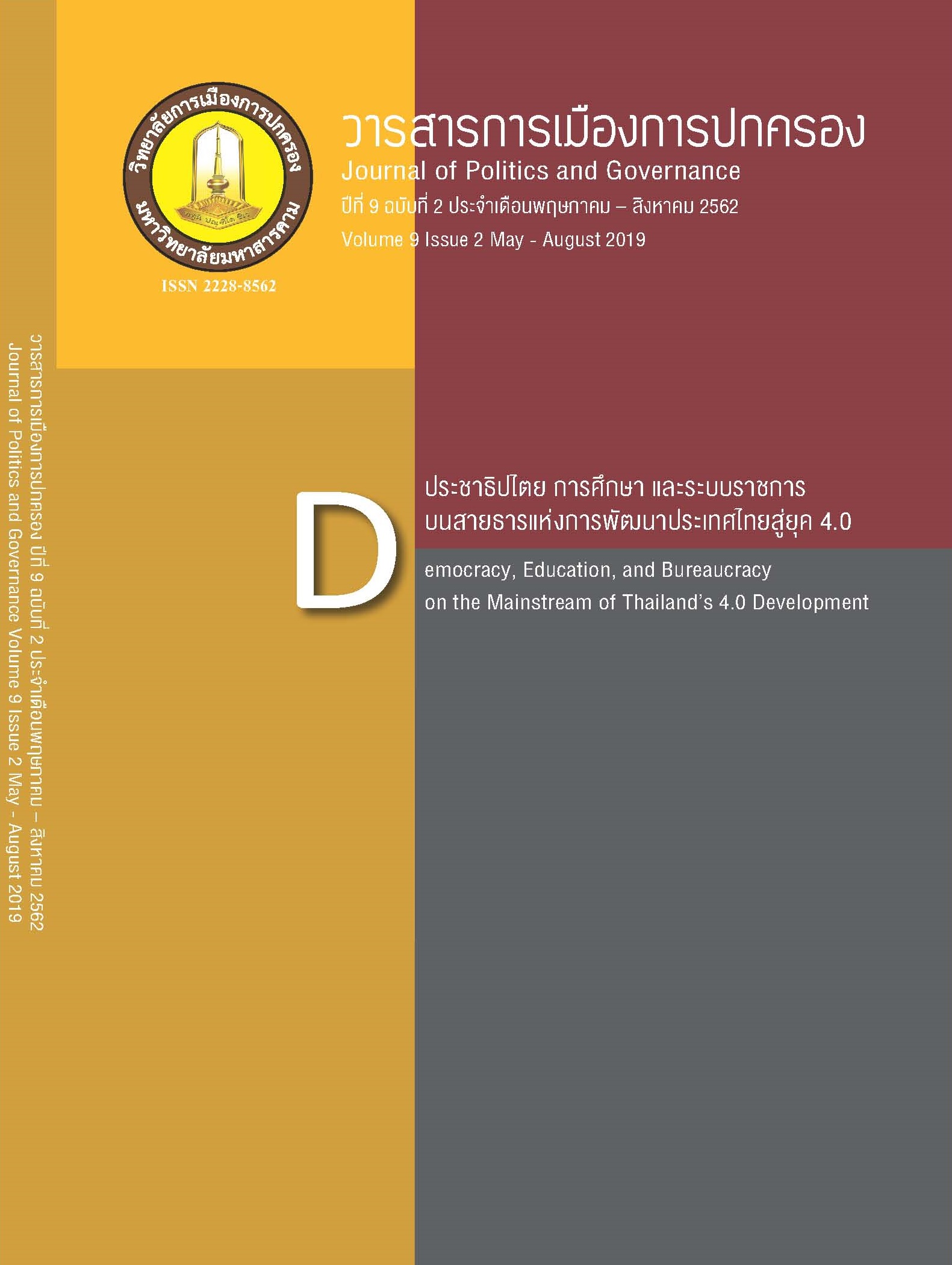การบริหารเชิงกลยุทธ์ : ความท้าทายและข้อเสนอแนะในการจัดการ ทรัพยากรมนุษย์องค์กรภาครัฐ
Main Article Content
บทคัดย่อ
บทความนี้มีวัตถุประสงค์เพื่อ 1) ศึกษาวิวัฒนาการการจัดการทรัพยากรมนุษย์ภาครัฐในสหรัฐอเมริกาและประเทศไทย 2) เสนอทัศนะและวิเคราะห์เกี่ยวกับจุดแข็ง จุดอ่อน ข้อจำกัดเกี่ยวกับการบริหารเชิงกลยุทธ์จากฝั่งตะวันตกและรูปแบบการจัดการที่หน่วยงานภาครัฐของไทยใช้ในปัจจุบัน 3) เพื่อรวบรวมแนวคิดด้านแรงจูงใจต่างๆ รวมถึงวิพากษ์ทฤษฏีและแนวทางในการนำไปใช้ที่ช่วยผลักดันให้การบริหารทรัพยากรมนุษย์ของภาครัฐปฏิบัติงานบรรลุพันธกิจของหน่วยงานได้อย่างมีประสิทธิภาพ และ 4) เพื่อนำเสนอและอภิปรายใน 6 ประเด็นซึ่งภาครัฐต้องวางแผนรับมือกับความท้าทายที่จะเกิดขึ้น การเขียนบทความชิ้นนี้ ผลลัพธ์ซึ่งได้จากการค้นคว้าและทบทวนองค์ความรู้ด้านจิตวิทยา (Psychology) การจัดการภาครัฐแนวใหม่ (New Public Management) การจัดการนิยม (Managerialism) และการจัดการทรัพยากรมนุษย์ (Human Resources Management) นำไปสู่ข้อสรุปว่า ภาครัฐต้อง “ปฏิรูป (Reform)” อย่างจริงจัง และยังได้สะท้อนถึงแนวทางปฏิบัติที่เป็นเลิศ (Best Practices) อันเป็นแนวคิดการจัดการแบบตะวันตกอาจไม่เหมาะสมในการนำมาใช้ในบริบทของไทยทั้งหมด โดยภาครัฐ ภาคีต่างๆ และผู้มีส่วนได้ส่วนเสียที่จะช่วยตรวจสอบ ขับเคลื่อนบุคลากรภาครัฐควรเน้นกลยุทธ์ที่สร้างขึ้นมาใหม่เข้ามาใช้อย่างเป็นระบบและมีความสอดคล้อง (Best Fit/Contingent) มากกว่า ดังนั้น “แนวคิดปฏิบัตินิยม (Pragmatism)” จึงเป็นวิธีการ(means) เชิงกลยุทธ์หรือเป็นทางเลือกที่ดีซึ่งผู้ที่เกี่ยวข้องกับการทำงานในภาครัฐตลอดจนผู้อ่านควรบูรณาการ ผสมผสานหรือสามารถดัดแปลงสิ่งที่มีอยู่นำไปใช้ประโยชน์ให้เกิดผลที่เป็นเลิศได้
Article Details
References
Belasen, A.T. (2000). Leading the Learning Organization: Communication andCompetencies for Managing Change. New York: State University of NY.
Carol, C. C. (1997). The Principles of Scientific Management by Frederick W. Taylor: the private printing. Journal of Management History, 3(1), 18 – 30.
Getha-Taylor, H. (2010). Human Relations 2.0: Envisioning the Organization of the Future. Public Administration Review, 70(S1); 170-172.
Gulick, Luther. (1937). Notes on the Theory of Organization. In Gulick, Luther; Urwick, Lyndall. Papers on the Science of Administration. New York: Institute of Public Administration
Henry, N. (2007). Public administration and public affairs. ed 11th. New York: Pearson/ Longman.
Herzberg, F. (1968). One more time: How do you motivate employees?. Harvard Business Review, 40(1), 53-62.
Lunenburg, F. C. (2011). Expectancy Theory of Motivation : Motivating by Altering Expectations. International Journal of Management, Business and Administration. 15 (1), 1 – 6.
McClelland, D. C. (1976). The achieving society. New York, NY: Irvington Publishers.
McGregor, D. (1960). The Human Side of Enterprise. New York: McGraw-Hill.
Olson, R., Verley, J., Santos, L., and Salas, C. (2004). What We Teach Students About the Hawthorne Studies: A Review of Content Within a Sample of Introductory I-O and OB Textbooks. The Industrial-Organizational Psychologist, 41(3), 23 – 39.
Quacquarelli Symonds. (2018). QS World University Rankings® 2017/18. Retrieved 5 April 2016 from http://www.topuniversities.com/university-rankings/ world-university rankings/2018
Rosenbloom, D. H. (1993). Editorial: Have an administrative Rx? Don’t forget the politics!. Public Administration Review, 53, 503-507.
Skinner, B.F. (1969). Contingencies of reinforcement: A theoretical analysis. New York: Appleton-Century-Crofts.
Tay, L., & Diener, E. (2011). Needs and subjective well-being around the world. Journal of Personality and Social Psychology, 101(2), 354.
Vroom, V. H. (1964). Work and Motivation. New York: McGraw Hill.
Werther, W. B. & Davis, K. (1993). Human Resources and Personnel Management. 4thEd. New York: McGraw-Hill

